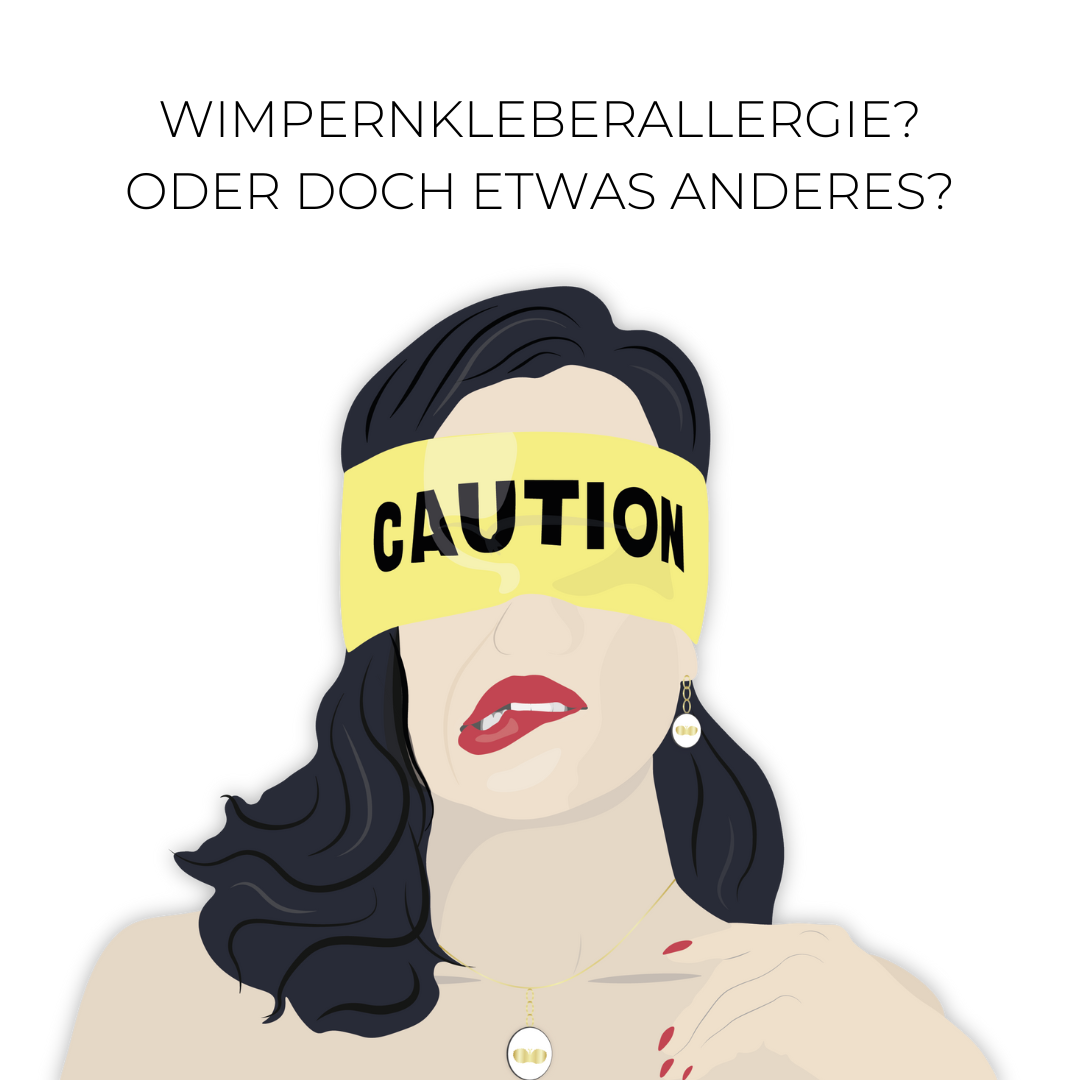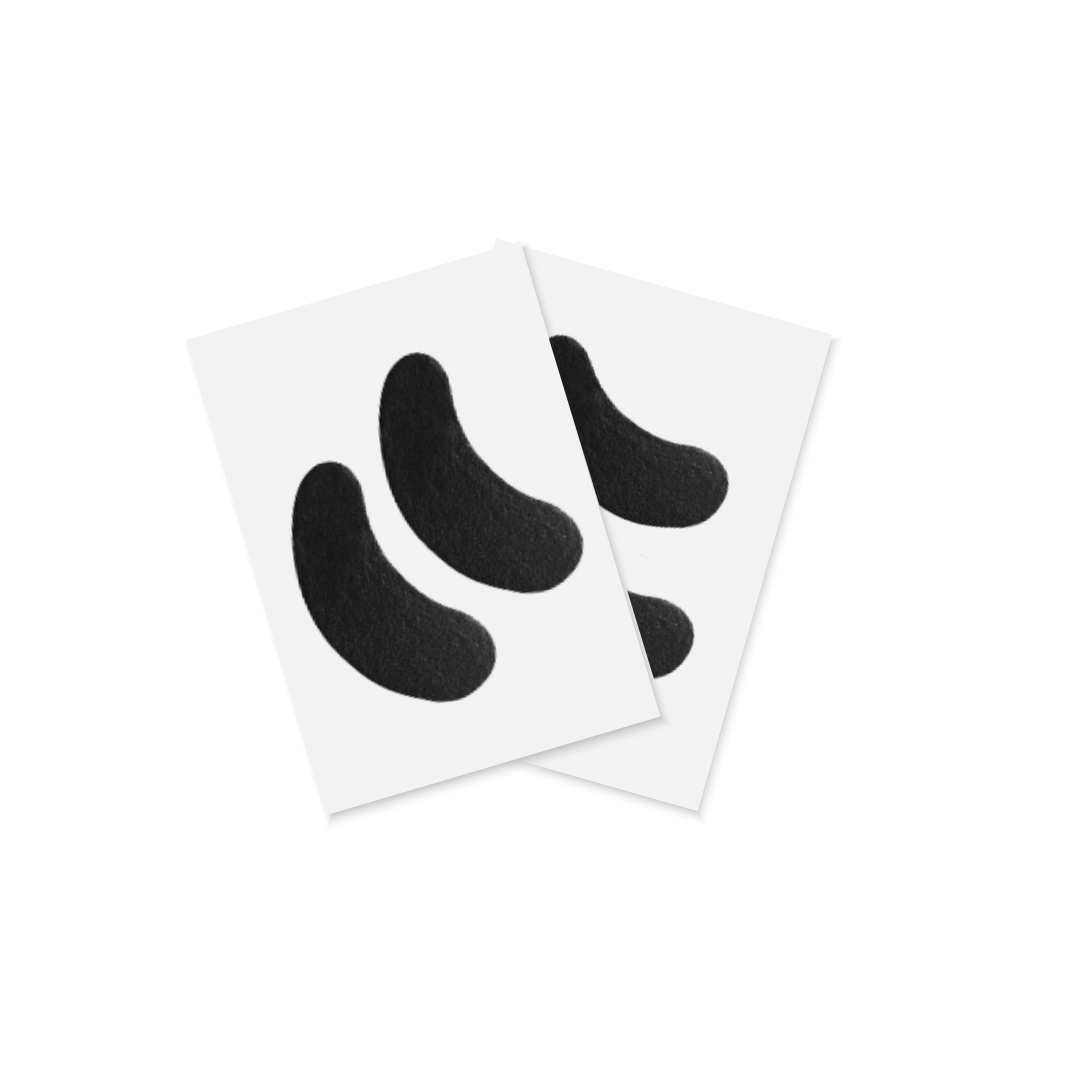
ALLERGIES & IRRITATIONS Eyelash extensions
Not everyone can wear eyelash extensions! Or can they?
Allergic reactions are very complex, as they are caused by many different factors in relation to eyelash extensions, and they can manifest themselves at any time and in many different ways. In some people, it manifests with redness and swelling of the eyelid near the lash line. Some people have scattered redness and swelling around the eye area. Most of the time the redness and swelling is accompanied by itching. There are several different causes for reactions and it is important as a stylist to be able to distinguish a true allergic reaction from simple irritation. Irritation also has several different causes and is different from a true allergy in which the body is unable to produce histamine. Sometimes the only way to differentiate between an allergy or irritation is by the reaction of the symptoms to antihistamine medication. As we are not allowed and should not give medical advice(!!!), we should refer this client to a doctor for clarification. How can an eyelash stylist recognize symptoms of a true allergic reaction to eyelash extension products? Below is a list of all possible variables that need to be considered
1. medical tape
A significant number of the population (approximately 15%) are allergic to patches or medical tape. Often, most people are unaware of this allergy until the day of their first eyelash extension. Medical tape is similar to medical tape or band-aids. The skin around the eyes is particularly sensitive and thinner than the skin on other parts of the body, which is why it reacts to stimuli more often than expected. This allergy can occur at any time, even after years of wearing eyelash extensions or on first contact with these products. To avoid a patch allergy, medical tape or patches should not be used to tape the lower eyelashes or lift the eyelids. Instead, eye pads without gel or silicone pads without additional fixation with medical tapes are recommended. Note: Silicone pads in particular are anti-allergenic and therefore an excellent alternative for sensitive customers. Tape allergies usually manifest themselves with redness and swelling in the entire eye area, not just along the upper eyelid.
2. cyanoacrylate
Distinguishing allergic reactions Allergies to the main ingredient cyanoacrylate are more difficult to distinguish from irritation caused by eyelash extension products. These allergies can occur at any time, even years later or on first use. Typical symptoms include red, swollen and itchy eye rims. Microscopic dots of glue on the eyelid may be an indication of a reaction to the glue. Patch tests can be performed by applying 3-5 eyelash extensions per eye.
3. eyelid irritation due to eyelash extensions
The eyelash extensions themselves can cause irritation of the eyelid, especially through friction during sleep. The thicker the extensions are, the more likely they are to cause irritation, especially in sensitive individuals. To minimize mechanical irritation, thinner eyelash extensions should be preferred. Extensions that are too long can also cause irritation, as their length causes increased movement and therefore friction during sleep. Furthermore, eyelash extensions that are too close or directly attached to the eyelid can cause irritation. In such cases, itching, redness and swelling of the eyelid can occur due to the friction of the eyelash extensions. Careful placement of eyelash extensions and regular checks of length and positioning can help to minimize eyelid irritation and improve comfort for clients.
4. seasonal allergies
Some clients who suffer from hay fever or pollen allergies may need to avoid eyelash extensions for around two months during peak pollen season. Although there are exceptions, symptoms such as swelling, itching and redness should be considered during this time. This phase typically occurs in spring, but some people also react to pollen from late bloomers in summer and fall.
5 Irritation during application
Sensitive clients may react to the eyelash glue during application. It is important to ensure that the eye is completely closed during the entire application to prevent the penetration of adhesive vapours. Incorrectly positioned eye pads can also cause irritation. They should be positioned so that they do not come into contact with the waterline and do not irritate the lower eyelid. Additionally, care should be taken to minimize pressure on the eyelid during separation to prevent the ingress of adhesive vapors. Using a nano-sprayer to humidify the air during application can also help reduce irritation and ensure a more comfortable experience for the client.
6 Rosacea and its effects on eyelash extensions
Clients who suffer from inflammatory skin conditions such as eczema and rosacea are particularly susceptible to irritation from eyelash extension products. There is even a specific form of rosacea that focuses on the eyelids, and symptoms typically include redness, swelling and itching. Many clients may not even be aware that they have rosacea until they experience problems with their eyelash extensions, and these symptoms can occur even if the client has rosacea on other parts of their body. Therefore, it is important that lash stylists have sensitivity and knowledge of such skin conditions and act accordingly to ensure the comfort and safety of their clients.
7. eyelash tinting and allergic reactions
There is also a risk of allergic reactions when tinting eyelashes. It is therefore essential to carry out a patch test before tinting. To do this, apply a small dot of dye to the skin below the arm or just behind the ear. It is important to note that a patch test does not offer 100% certainty. However, it is an important precautionary measure to identify potential allergic reactions and minimize the risk to clients.
8. UV eyelash extensions:
The solution for allergy-prone clients UV eyelash extensions open up an innovative option for clients who suffer from allergic reactions to conventional eyelash extensions. In fact, studies have shown that more than 80% of those who are allergic to conventional extensions tolerate the UV version without any problems. The main cause of allergies with conventional eyelash extensions is the glue vapours. With UV eyelash extensions, however, these adhesive vapors are eliminated from the ambient air within milliseconds. By using fluorescent materials that glow under ultraviolet light, UV eyelash extensions not only offer an attractive look, but also an allergy-free alternative for sensitive clients. With this innovative technique, customers can enjoy their lashes to the full again without having to worry about allergic reactions. So if you are one of those who are allergic to conventional eyelash extensions, the UV version could be the perfect solution for you. Experience radiant eyelashes without compromising your health - with UV eyelash extensions!
Allergic reactions are very complex, as they are caused by many different factors in relation to eyelash extensions, and they can manifest themselves at any time and in many different ways. In some people, it manifests with redness and swelling of the eyelid near the lash line. Some people have scattered redness and swelling around the eye area. Most of the time the redness and swelling is accompanied by itching. There are several different causes for reactions and it is important as a stylist to be able to distinguish a true allergic reaction from simple irritation. Irritation also has several different causes and is different from a true allergy in which the body is unable to produce histamine. Sometimes the only way to differentiate between an allergy or irritation is by the reaction of the symptoms to antihistamine medication. As we are not allowed and should not give medical advice(!!!), we should refer this client to a doctor for clarification. How can an eyelash stylist recognize symptoms of a true allergic reaction to eyelash extension products? Below is a list of all possible variables that need to be considered
1. medical tape
A significant number of the population (approximately 15%) are allergic to patches or medical tape. Often, most people are unaware of this allergy until the day of their first eyelash extension. Medical tape is similar to medical tape or band-aids. The skin around the eyes is particularly sensitive and thinner than the skin on other parts of the body, which is why it reacts to stimuli more often than expected. This allergy can occur at any time, even after years of wearing eyelash extensions or on first contact with these products. To avoid a patch allergy, medical tape or patches should not be used to tape the lower eyelashes or lift the eyelids. Instead, eye pads without gel or silicone pads without additional fixation with medical tapes are recommended. Note: Silicone pads in particular are anti-allergenic and therefore an excellent alternative for sensitive customers. Tape allergies usually manifest themselves with redness and swelling in the entire eye area, not just along the upper eyelid.
2. cyanoacrylate
Distinguishing allergic reactions Allergies to the main ingredient cyanoacrylate are more difficult to distinguish from irritation caused by eyelash extension products. These allergies can occur at any time, even years later or on first use. Typical symptoms include red, swollen and itchy eye rims. Microscopic dots of glue on the eyelid may be an indication of a reaction to the glue. Patch tests can be performed by applying 3-5 eyelash extensions per eye.
3. eyelid irritation due to eyelash extensions
The eyelash extensions themselves can cause irritation of the eyelid, especially through friction during sleep. The thicker the extensions are, the more likely they are to cause irritation, especially in sensitive individuals. To minimize mechanical irritation, thinner eyelash extensions should be preferred. Extensions that are too long can also cause irritation, as their length causes increased movement and therefore friction during sleep. Furthermore, eyelash extensions that are too close or directly attached to the eyelid can cause irritation. In such cases, itching, redness and swelling of the eyelid can occur due to the friction of the eyelash extensions. Careful placement of eyelash extensions and regular checks of length and positioning can help to minimize eyelid irritation and improve comfort for clients.
4. seasonal allergies
Some clients who suffer from hay fever or pollen allergies may need to avoid eyelash extensions for around two months during peak pollen season. Although there are exceptions, symptoms such as swelling, itching and redness should be considered during this time. This phase typically occurs in spring, but some people also react to pollen from late bloomers in summer and fall.
5 Irritation during application
Sensitive clients may react to the eyelash glue during application. It is important to ensure that the eye is completely closed during the entire application to prevent the penetration of adhesive vapours. Incorrectly positioned eye pads can also cause irritation. They should be positioned so that they do not come into contact with the waterline and do not irritate the lower eyelid. Additionally, care should be taken to minimize pressure on the eyelid during separation to prevent the ingress of adhesive vapors. Using a nano-sprayer to humidify the air during application can also help reduce irritation and ensure a more comfortable experience for the client.
6 Rosacea and its effects on eyelash extensions
Clients who suffer from inflammatory skin conditions such as eczema and rosacea are particularly susceptible to irritation from eyelash extension products. There is even a specific form of rosacea that focuses on the eyelids, and symptoms typically include redness, swelling and itching. Many clients may not even be aware that they have rosacea until they experience problems with their eyelash extensions, and these symptoms can occur even if the client has rosacea on other parts of their body. Therefore, it is important that lash stylists have sensitivity and knowledge of such skin conditions and act accordingly to ensure the comfort and safety of their clients.
7. eyelash tinting and allergic reactions
There is also a risk of allergic reactions when tinting eyelashes. It is therefore essential to carry out a patch test before tinting. To do this, apply a small dot of dye to the skin below the arm or just behind the ear. It is important to note that a patch test does not offer 100% certainty. However, it is an important precautionary measure to identify potential allergic reactions and minimize the risk to clients.
8. UV eyelash extensions:
The solution for allergy-prone clients UV eyelash extensions open up an innovative option for clients who suffer from allergic reactions to conventional eyelash extensions. In fact, studies have shown that more than 80% of those who are allergic to conventional extensions tolerate the UV version without any problems. The main cause of allergies with conventional eyelash extensions is the glue vapours. With UV eyelash extensions, however, these adhesive vapors are eliminated from the ambient air within milliseconds. By using fluorescent materials that glow under ultraviolet light, UV eyelash extensions not only offer an attractive look, but also an allergy-free alternative for sensitive clients. With this innovative technique, customers can enjoy their lashes to the full again without having to worry about allergic reactions. So if you are one of those who are allergic to conventional eyelash extensions, the UV version could be the perfect solution for you. Experience radiant eyelashes without compromising your health - with UV eyelash extensions!







